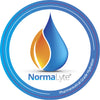Does POTS Make Your Hands Shake?


POTS (Postural Orthostatic Tachycardia Syndrome) is a condition that affects the autonomic nervous system, which controls involuntary bodily functions like heart rate, blood pressure, and digestion. When someone with POTS stands up, their blood pressure drops and their heart rate increases. This can cause a number of symptoms, including dizziness, lightheadedness, and fainting.
- POTS is most common in young women, but it can affect people of all ages and genders.
- The exact cause of POTS is unknown, but it is thought to be caused by a combination of factors, including genetics, an autoimmune response, and trauma.
- POTS can be a chronic condition, but it can be managed with treatment.
One symptom that can often be overlooked is shaking, either in only your hands or all over.
POTS AND THE SHAKES
Maybe you've noticed recently that your handwriting isn't as smooth as it used to be. Or, maybe you're finding it difficult to put the key in the lock on your home. You've noticed the shaking, but have been ignoring it as a symptom of POTS.
Don't stick your head in the sand. It may be annoying, but it's possible it's benign.
WHY AM I SHAKING?
One of the reasons why someone with POTS shakes is because of the sudden drop in blood pressure that occurs when they stand up. This drop in blood pressure can cause a decrease in blood flow to the brain, which can lead to shakiness.
Another reason why someone with POTS shakes is because of the high levels of adrenaline and noradrenaline that are released in response to the change in body position. These hormones can cause the heart to beat faster and the blood vessels to constrict, which can also lead to shakiness.
In some people with POTS, the shaking that occurs when they stand up is caused by a condition called hyperadrenergic POTS.
WHAT IS HYPERADRENERGIC POTS?
Hyperadrenergic POTS is characterized by high levels of adrenaline and noradrenaline, which are hormones that are released in response to stress. These hormones can cause the heart to beat faster and the blood vessels to constrict, which can lead to shaking.
SHAKING IS DIFFERENT FOR EVERYONE
The shaking that occurs with POTS can be mild or severe. In some cases, it may only be noticeable when the person stands up quickly. In other cases, it may be so severe that it makes it difficult to walk, stand, or even write.
Just as your symptoms can be wildly different from the next person, the amount of shaking (or lack thereof) will differ.
WHAT TO DO ABOUT POTS ASSOCIATED SHAKING
You knew all that, so you skipped to the good part. I get it, I would too. Here's some things you can do to make the shaking better:
- Talk to your doctor. Your doctor can help to determine the cause of the shaking and develop a treatment plan that is right for each individual.
-
Make lifestyle changes. There are a number of lifestyle changes that can help to reduce the symptoms of POTS, including:
- Increased fluid intake. Drinking plenty of fluids helps to keep the blood volume up, which can help to prevent the blood pressure from dropping too low. Using medical grade electrolytes like NormaLyte can help your body maintain those appropriate fluid levels better than water alone.
- Increased salt intake. Salt helps to retain fluid, which can also help to prevent the blood pressure from dropping too low. Keep in mind that salt and sodium are not the same thing. Unsure how much of each you're getting? Use our handy salt/sodium calculator here.
- Gradual changes in position. When standing up, it is important to do so slowly and gradually. This will give the body time to adjust to the change in position and prevent the blood pressure from dropping too low.
- Compression garments. Compression garments, such as compression stockings or tights, can help to improve circulation and prevent the blood from pooling in the legs.
- Exercise. Exercise can help to improve blood flow and circulation, which can help to reduce the symptoms of POTS. However, it is important to start slowly and gradually increase the intensity of exercise as tolerated.
- Take medication. There are a number of medications that can help to treat the symptoms of POTS. Talk to your doctor about what might work for you.
If you are experiencing shaking as a symptom of POTS, it is important to talk to your doctor. They can help you to determine the cause of the shaking and develop a treatment plan that is right for you.









Sandra, if you’re looking for a specialist we would recommend looking at Dysautonomia International’s doctor resource page: http://www.dysautonomiainternational.org/page.php?ID=14
Looking for a doctor that specializes in treating POTS. I live in Orange County, CA.
Leave a comment